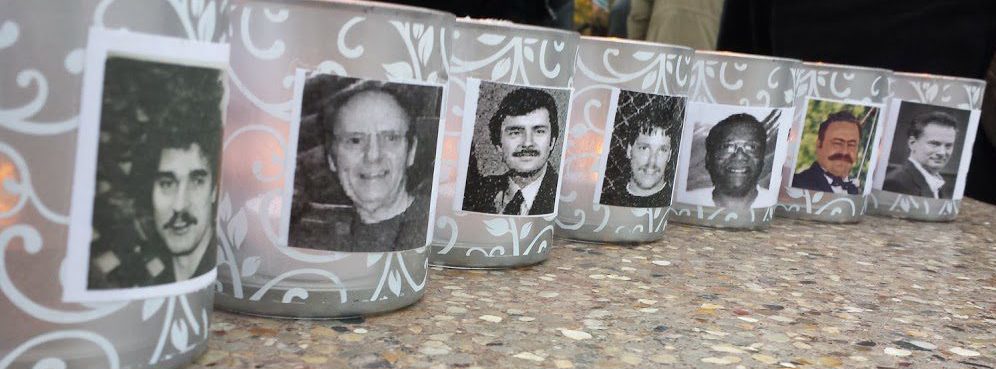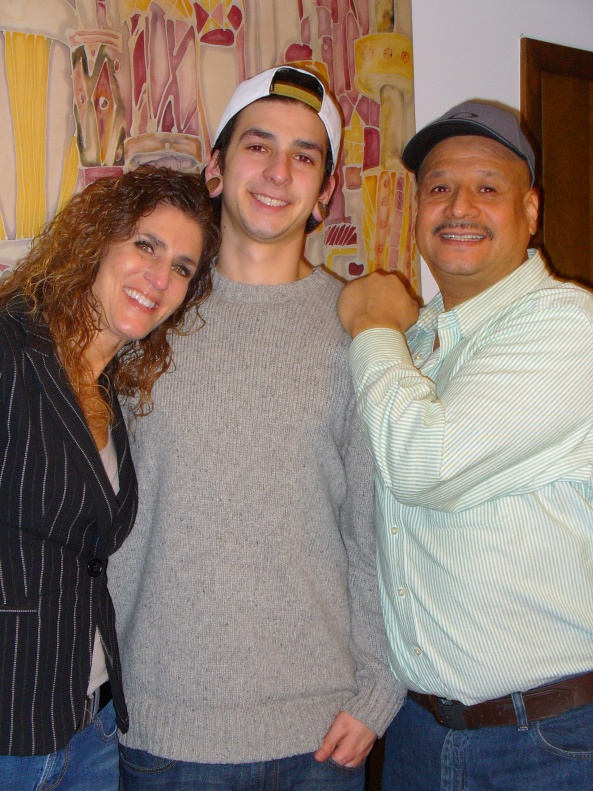“This looks like the place,” I said to my husband, Mike as we hurried to the entrance of the Giddens Alumni Learning Center on the Hamline University campus in St. Paul, Minnesota. I was feeling anxious because we were running late for a screening of the wrongful conviction documentary True Conviction.
According to the trailer we viewed online, the film tells the story of how three Texas exonerees; Christopher Scott, Steven Phillips, and Johnnie Lindsey1 combined forces to form a new detective agency based in Dallas, TX called House of Renewed Hope. Founded by Scott in 2010, the main focus of this non-profit organization is to help other wrongfully convicted prisoners.

Exonerees Johnnie Lindsey, Christopher Scott and Steven Phillips. (Photo used with permission from Independent Lens PBS)
Since becoming advocates for the wrongfully convicted, Mike and I have acquainted ourselves with both the courageous survivors of an imperfect criminal justice system and the everyday heroes working tirelessly to correct its many flaws. That evening, Thursday, April 19, 2018, we were about to meet Christopher Scott, one of those true champions who inadvertently dangled on both sides of that fence. After having been targeted, convicted, and exonerated for a crime he did not commit he began a crusade to help others achieve the same ending. He simply couldn’t forget the ones he knew about that had been left behind in prison.
Christopher and I connected on social media before this event was publicized and I was thrilled to learn he was the guest of honor. Being among the last to arrive at the theater-like room—now bustling with people—I hoped we didn’t miss our chance to speak with him before the film started. Sometimes it’s difficult to find the opportunity as an evening progresses and I worried about delivering a special gift to him that I had brought along.
I scanned the room as we descended the stairs. I spotted Christopher sitting by himself and not currently engaged in conversation. “Looks like we’ve arrived in time to introduce ourselves,” I told Mike.
On our way over to where Christopher sat, we said a quick “hello” to M Sheridan Embser-Herbert, director of the Hamline University Center for Justice and Law who was hosting the event. Standing near Christopher were the Innocence Project of Minnesota’s executive director, Nick Vilbas and the Project’s legal director, Julie Jonas.

Nick Vilbas, M Sheridan Embser-Herbert, Christopher Scott and Julie Jonas (Photo courtesy of the Innocence Project of Minnesota)
Christopher appeared relaxed as we approached. When I extended my hand to shake his, he sat tall and smiled while returning the gesture.
“Hey Christopher, I’m Joan,” I said. You and I are friends on twitter.”
Christopher’s face lit up and in a distinct Southern drawl he said, “I enjoy our twitter conversations.”
The three of us chatted for a few minutes. I then retrieved a copy of my book Reclaiming Lives from my handbag. “Here it is,” I said to Christopher. “And check out the sticker on the cover. I won a national book award.”
Christopher was grateful for the gift and said, “I’m definitely planning on reading this during my flight home.”
The film was about to start so Mike and I quickly found a pair of empty seats in the row behind and kitty-corner to where Christopher was seated.
The documentary—which aired on the Independent LensPBS program on April 30th—takes the audience on a deeply personal journey of the friendship, commitment, and heartache this trio had experienced. In addition to highlighting the work of their organization, the film reveals the circumstances of each of their wrongful convictions. Christopher’s roots and the repercussions of his absence which presented new and ongoing challenges for his family, are also emphasized in this highly emotionally charged film.
Christopher’s story: Christopher’s troubles began in 1997 when he wound up in the wrong place at the wrong time while driving to a friend’s house in a Dallas neighborhood. A robbery and fatal shooting had taken place that night, somewhere in the vicinity. There was a lot of commotion on the street with squad cars hugging the side of the road and flashing lights engaged. Police officers in the area were on high alert, looking for suspects. As Christopher cautiously drove by, he wondered what had happened. And he realized as he turned the corner that a squad car with its flashers on had pulled up behind him and started to follow him. Christopher reached his destination. While inside his friend’s house, more squad cars showed up and officers surrounded the house. Christopher and his friend were asked to exit the house and lay down on the ground out front. Numerous suspects were brought to the same location and asked to do the same. Christopher was eventually singled out as a person of interest even though his clothing didn’t match the description of the clothing the perpetrators wore. Nevertheless, he was taken to the police station for questioning, handcuffed with his hands behind his back, and placed in a room by himself. A woman appeared with an officer that Christopher recognized as the one who had brought him in. The officer asked the woman if Christopher was the man who had killed her husband. She confirmed that he was.
Christopher was charged with murder and after an eight day trial, received a life sentence. It had been that easy to take an innocent life and turn it into a hellish nightmare.
During the film, I glanced over at Christopher on occasion to observe his reactions to the tragedies that unfolded before us. Each time, I saw tears in his eyes. I guessed that the drive…strength of character…and courage of this man along with an ability to show compassion and empathy toward others—all of which were aptly portrayed in the film—were rooted in the pain he was now feeling as he relived those moments.

(Photo courtesy of the Hamline University Center for Justice and Law)
After the film, Christopher spoke to the audience and kindly mentioned my name when expressing his appreciation for the support he received that evening. During an interactive discussion that followed, many in the audience expressed their dismay about what they had witnessed, the many lives torn apart, and how widespread the corruption within the criminal justice system is. One woman shared a personal story about her son’s recent wrongful conviction. This spurred a conversation about term limits, elections, and how judges and prosecutors are too easily re-elected especially when they run unopposed. Also mentioned was the despicable lack of accountability of these officials when findings of unethical and unlawful practices—blatant disregard for the law—are exposed.

Exoneree Christopher Scott with Joan and Mike Treppa
Mike and I did get the chance to speak with Christopher at length afterward. I remarked, “You didn’t have a dry eye the entire time, did you?”
“No, I didn’t,” he admitted. “This stays with you,” said Christopher of his experience. “And I don’t expect it will ever go away.”
Also joining the conversation was Mark Saxenmeyer, CEO of The Reporter’s Inc.; a Minneapolis based journalistic production company promoting social change and justice through multimedia storytelling.
“Mark is producing a wrongful conviction documentary called Guilty Until Proven Innocent,” I told Christopher.
Mark went on to explain that this film is still in production. “Ours will run as a series and focus on a number of wrongful conviction cases from across the country,” Mark said. “And the Wisconsin Monfils case will be featured in this series.” .
Ironically, 2009 was a pivotal year for Christopher…and for me. He had been declared “actually innocent” and was released from prison when the person who committed the murder came forward to confess. He spent thirteen years in prison for a crime he did not commit.
2009 was the year I learned there are innocent people in prison and that they can be convicted based on little, inadequate, flawed or NO evidence whatsoever. I learned that in a significant amount of cases, evidence is even fabricated to fit a specific theory! That year I began my crusade on behalf of the six innocent men convicted in the 1992 death of mill worker Tom Monfils; a murder many of us believe never happened.

(L to R) Decedent Tom Monfils, convicted men; Dale Basten, Michael Johnson, Michael Hirn, Reynold Moore, Keith Kutska, and exoneree Michael Piaskowski
I was able to share an incredible irony with Christopher about Jamie Meltzer; MFA program director in documentary film at Stanford University and director of True Conviction. Years ago, through an online networking webpage called About.me, a similar interest in wrongful convictions forged a brief connection between Jamie and me. The timeline suggests he was in the early stages of putting this film together while I was in the throes of publicizing my mission on behalf of the Wisconsin men. Because of Jamie’s affiliation with Stanford University, I had given him the name of Lawrence Marshall—also affiliated with Stanford—as a reference for his project because of my knowledge of the appellate work Marshall had done for one of the six wrongfully convicted men I support.
Final thoughts: I see time and again that until a wrongful conviction touches us personally, we too easily and too often cast the issue aside as irrelevant or insignificant. We must acknowledge that these circumstances destroy families, tear communities apart, and affect our everyday lives more than we could ever imagine. We must celebrate people like Jamie, entities like PBS, and organizations like House of Renewed Hope, The Reporter’s Inc., The Innocence Network, and The Center for Justice and Law, all of whom so willingly and diligently create an awareness and help to change laws and procedures that undermine our freedoms.
Please join me in saying…THANK YOU!
1) As is on the HRH website: “Sadly in 2018, cancer took Johnnie’s life but his spirit lives on and he will forever be a member of the team.”
2) Dale Basten—the oldest of the Wisconsin men—was paroled in 2017 due to his failing health when his medical costs at $92K/yr. became too costly for the WI prison system to absorb. Sadly, in June of 2018, he passed away in a nursing home with his two daughters at his side.







